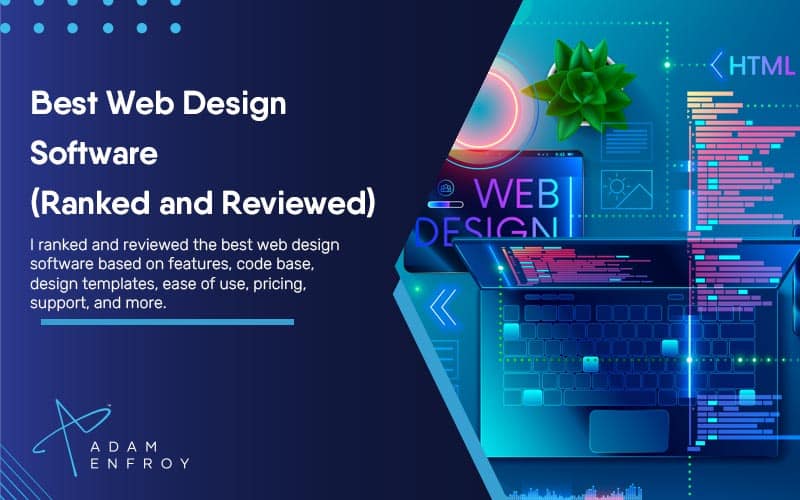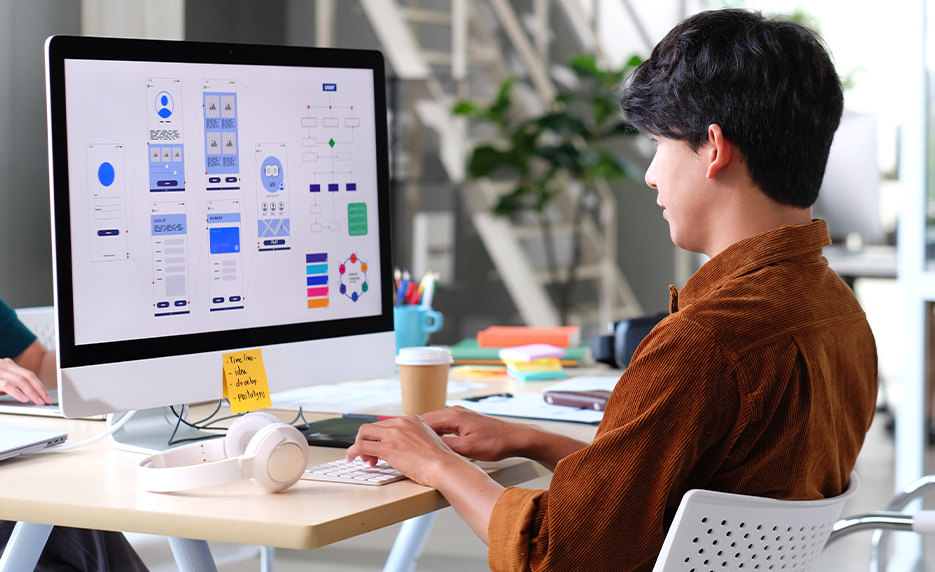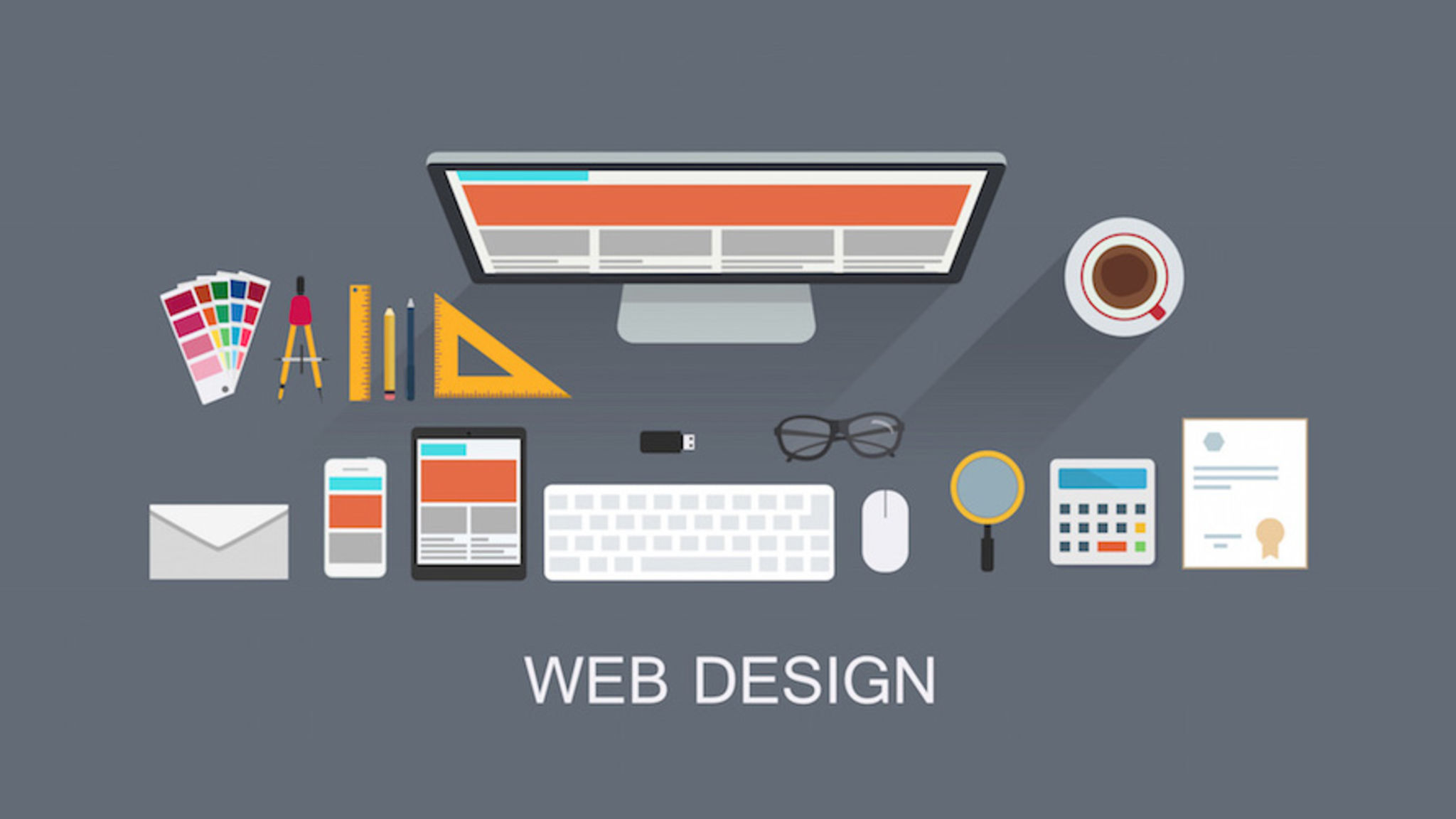All Categories
Featured
Table of Contents
- – Why Web Design Is Dead - - Ux Magazine Tips an...
- – Collaborate & Create Amazing Graphic Design F...
- – What Can I Do With A Web Design And Developme...
- – Sustainable Web Design: Home Tips and Tricks:
- – $899 - Custom Mobile Friendly Website Design ...
- – 10 Principles Of Good Web Design - Smashing M...
- – Arch Web Design: Top-rated Web Design Agency...
- – Web Design & Seo By Acs - Syracuse Web Desig...
- – Web Design Services By Freelance Website Des...
- – Responsive Web Design Certification - Freeco...
- – What Does A Web Designer Do? - Careerexplore...
Why Web Design Is Dead - - Ux Magazine Tips and Tricks:
Quick summary Use and the utility, not the visual design, identify the success or failure of a website. Because the visitor of the page is the only individual who clicks the mouse and for that reason chooses everything, user-centric design has developed as a basic method for effective and profit-oriented website design - web design frederick md.
and the energy, not the visual design, determine the success or failure of a site. Given that the visitor of the page is the only person who clicks the mouse and therefore chooses everything, user-centric style has ended up being a basic approach for successful and profit-oriented website design. If users can't utilize a function, it might as well not exist.
g. where the search box ought to be put) as it has already been performed in a number of posts; rather we concentrate on the methods which, utilized correctly, can cause more sophisticated design decisions and streamline the procedure of viewing provided info. Please see that you may be thinking about the usability-related articles we've published prior to: Concepts Of Good Site Style And Efficient Web Style Guidelines, In order to use the concepts properly we first require to comprehend how users engage with sites, how they think and what are the standard patterns of users' behavior.
Collaborate & Create Amazing Graphic Design For Free Tips and Tricks:
Visitors look at each brand-new page, scan a few of the text, and click on the very first link that captures their interest or slightly looks like the thing they're looking for. There are big parts of the page they do not even look at. A lot of users look for something intriguing (or beneficial) and clickable; as quickly as some promising candidates are found, users click.
If a page supplies users with high-quality material, they are willing to jeopardize the content with advertisements and the design of the site. This is the reason that not-that-well-designed websites with high-quality content acquire a lot of traffic over years. Content is more crucial than the design which supports it.

Users do not read, they scan. Notification how "hot" areas abrupt in the middle of sentences. This is typical for the scanning procedure. Very simple concept: If a website isn't able to satisfy users' expectations, then designer stopped working to get his job done properly and the company loses money. The higher is the cognitive load and the less user-friendly is the navigation, the more ready are users to leave the site and search for alternatives.
What Can I Do With A Web Design And Development Degree? Tips and Tricks:
Neither do they scan web page in a linear fashion, going sequentially from one website area to another one. Instead users satisfice; they choose the first sensible alternative. As quickly as they discover a link that looks like it may result in the objective, there is a really good chance that it will be right away clicked.
It doesn't matter to us if we comprehend how things work, as long as we can utilize them. If your audience is going to act like you're designing signboard, then style terrific billboards." Users want to be able to control their browser and depend on the constant information presentation throughout the website.
If the navigation and website architecture aren't instinctive, the variety of enigma grows and makes it harder for users to comprehend how the system works and how to get from point A to point B. A clear structure, moderate visual hints and easily recognizable links can help users to find their path to their aim.
Sustainable Web Design: Home Tips and Tricks:

claims to be "beyond channels, beyond products, beyond circulation". What does it mean? Since users tend to explore websites according to the "F"-pattern, these 3 declarations would be the first aspects users will see on the page once it is filled. The style itself is basic and intuitive, to understand what the page is about the user needs to search for the response.
When you've attained this, you can interact why the system is helpful and how users can benefit from it. Do Not Waste Users' Persistence, In every task when you are going to use your visitors some service or tool, attempt to keep your user requirements minimal.
First-time visitors want to, not filling long web types for an account they might never ever use in the future. Let users check out the website and find your services without forcing them into sharing private information. It's not reasonable to require users to go into an e-mail address to evaluate the feature.
$899 - Custom Mobile Friendly Website Design By Go Web ... Tips and Tricks:
Stikkit is a best example for an user-friendly service which needs nearly nothing from the visitor which is unobtrusive and reassuring. Which's what you desire your users to feel on your web website. Apparently, Mite requires more. The registration can be done in less than 30 seconds as the form has horizontal orientation, the user doesn't even require to scroll the page.
A user registration alone suffices of an impediment to user navigation to reduce incoming traffic. 3. Handle To Focus Users' Attention, As websites supply both fixed and dynamic material, some elements of the user interface draw in attention more than others do. Undoubtedly, images are more captivating than the text just as the sentences marked as bold are more appealing than plain text.
Focusing users' attention to particular areas of the website with a moderate usage of visual aspects can help your visitors to receive from point A to point B without thinking of how it actually is supposed to be done. The less question marks visitors have, the they have and the more trust they can develop towards the company the site represents.
10 Principles Of Good Web Design - Smashing Magazine Tips and Tricks:
Make Every Effort For Function Exposure, Modern web designs are generally slammed due to their approach of guiding users with aesthetically appealing 1-2-3-done-steps, large buttons with visual results and so on. From the style viewpoint these aspects actually aren't a bad thing.
The site has 9 main navigation options which are visible at the very first glance. What matters is that the content is well-understood and visitors feel comfy with the way they engage with the system.
com gets straight to the point. No cute words, no overemphasized statements. Rather a rate: just what visitors are trying to find. An ideal option for reliable writing is touse short and concise phrases (come to the point as quickly as possible), use scannable layout (categorize the content, utilize several heading levels, use visual components and bulleted lists which break the flow of uniform text blocks), use plain and objective language (a promotion does not need to sound like advertisement; offer your users some reasonable and objective reason that they need to utilize your service or remain on your site)6.
Arch Web Design: Top-rated Web Design Agency For Saas ... Tips and Tricks:
Users are hardly ever on a website to enjoy the style; additionally, in many cases they are searching for the info regardless of the design - web design frederick md. Pursue simpleness instead of intricacy. From the visitors' viewpoint, the best site style is a pure text, without any ads or more content obstructs matching precisely the query visitors used or the material they've been trying to find.
Finch clearly presents the info about the website and provides visitors a choice of options without overcrowding them with unneeded content. 7. Don't Be Afraid Of The White Space, Actually it's really hard to overestimate the value of white area. Not just does it assist to for the visitors, but it makes it possible to perceive the info provided on the screen.
Complex structures are more difficult to read, scan, analyze and work with. If you have the choice between separating 2 design sections by a visible line or by some whitespace, it's usually better to utilize the whitespace option. (Simon's Law): the better you manage to provide users with a sense of visual hierarchy, the easier your material will be to view.
Web Design & Seo By Acs - Syracuse Web Design - Google ... Tips and Tricks:
The very same conventions and rules should be used to all elements.: do the most with the least amount of cues and visual elements. Clearness: all parts should be designed so their significance is not uncertain.
Conventions Are Our Buddies, Conventional design of site elements does not result in a boring web website. It would be an use nightmare if all sites had different visual presentation of RSS-feeds.
understand what they're anticipating from a website navigation, text structure, search placement etc. A case in point from usability sessions is to equate the page in Japanese (presuming your web users do not understand Japanese, e. g. with Babelfish) and supply your usability testers with a job to discover something in the page of different language.
Web Design Services By Freelance Website Designers - Fiverr Tips and Tricks:
Steve Krug recommends that it's much better to, however make the most of conventions when you don't. 10. Test Early, Test Typically, This so-called TETO-principle needs to be applied to every website design job as usability tests often provide into significant problems and issues connected to a given design. Test not too late, not too little and not for the wrong reasons.
Some crucial indicate bear in mind: according to Steve Krug, and screening one user early in the task is much better than screening 50 near completion. Accoring to Boehm's first law, mistakes are most frequent during requirements and design activities and are the more costly the later on they are eliminated.
That suggests that you create something, test it, fix it and after that check it once again. There might be issues which have not been found during the preliminary as users were practically obstructed by other issues. functionality tests. Either you'll be indicated the problems you have or you'll be indicated the lack of major design flaws which is in both cases a helpful insight for your project.
Responsive Web Design Certification - Freecodecamp.org Tips and Tricks:

This holds for designers too. After you've worked on a website for few weeks, you can't observe it from a fresh perspective any longer. You know how it is developed and for that reason you know precisely how it works you have the knowledge independent testers and visitors of your site would not have.
It can be linked to other locations such as graphic style, user experience, and multimedia arts, however is more aptly seen from a technological standpoint. It has actually ended up being a large part of people's everyday lives. It is hard to picture the Web without animated graphics, different styles of typography, background, videos and music.

During 1991 to 1993 the World Wide Web was born. Text-only pages might be viewed utilizing a basic line-mode internet browser. In 1993 Marc Andreessen and Eric Bina, produced the Mosaic browser. At the time there were multiple browsers, nevertheless the bulk of them were Unix-based and naturally text heavy. There had actually been no integrated approach to graphic style elements such as images or sounds.
What Does A Web Designer Do? - Careerexplorer Tips and Tricks:
The W3C was developed in October 1994 to "lead the World Wide Web to its complete potential by establishing typical procedures that promote its development and ensure its interoperability." This discouraged any one business from monopolizing a propriety browser and programming language, which could have altered the effect of the Web as a whole.
As this has actually occurred the technology of the web has actually likewise proceeded. There have actually also been considerable changes in the way people use and access the web, and this has altered how sites are created. Since the end of the browsers wars [] new browsers have been launched. Numerous of these are open source indicating that they tend to have much faster advancement and are more supportive of new requirements.
Learn more about Lovell Media Group LLC or TrainACETable of Contents
- – Why Web Design Is Dead - - Ux Magazine Tips an...
- – Collaborate & Create Amazing Graphic Design F...
- – What Can I Do With A Web Design And Developme...
- – Sustainable Web Design: Home Tips and Tricks:
- – $899 - Custom Mobile Friendly Website Design ...
- – 10 Principles Of Good Web Design - Smashing M...
- – Arch Web Design: Top-rated Web Design Agency...
- – Web Design & Seo By Acs - Syracuse Web Desig...
- – Web Design Services By Freelance Website Des...
- – Responsive Web Design Certification - Freeco...
- – What Does A Web Designer Do? - Careerexplore...
Latest Posts
Web Design Tutorials By Envato Tuts+ Tips and Tricks:
The Top 10 Most Important Elements Of A Website Design Tips and Tricks:
What Is A Web Designer? (2022 Guide) - Brainstation® Tips and Tricks:
More
Latest Posts
Web Design Tutorials By Envato Tuts+ Tips and Tricks:
The Top 10 Most Important Elements Of A Website Design Tips and Tricks:
What Is A Web Designer? (2022 Guide) - Brainstation® Tips and Tricks: